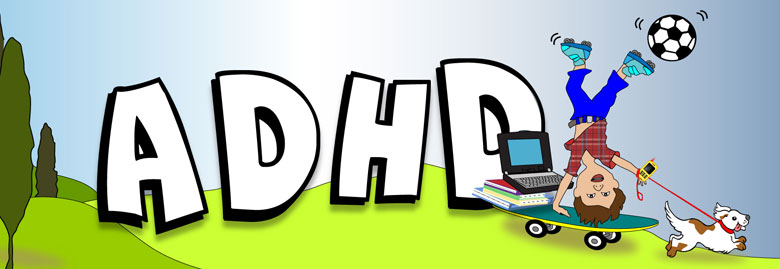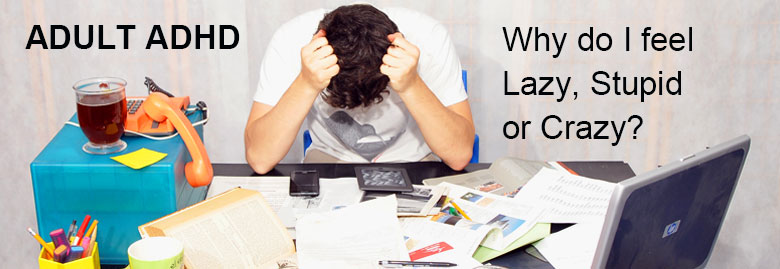Originally published in The Dyslexic Reader,
Vol 25,Issue 3 Copyright (c) 2001-year DDAI.
A Different Look at Attention Deficit Disorder
By Ronald D. Davis
During the past two decades, ADD and ADHD have become the learning disabilities of interest. We almost never hear of the other eighty or so learning disabilities. When I first encountered the term ADD and ADHD being applied to learning disabilities and dyslexic characteristics, I looked them up in The Merck Manual, the medical bible for diagnosing, defining, and treating medical conditions. Although the media promotes the idea that it is biological and / or biochemical, the medical community defines it as: “Developmentally inappropriate inattention and impulsivity with and without hyperactivity.” The definition goes on to state, “Several theories advocating biochemical, sensory and motor, physiologic, and behavioral correlates and manifestations have been proposed. Etiology is unknown.” (Etiology means the factors associated with the causation of disease.) In other words, both the cause and the correction of the condition is actually unknown.
Twenty years of successfully working with students labeled and mislabeled with ADD and ADHD has given us a different understanding.
In my opinion, the growing popularity of ADD / ADHD is fairly simple to understand. The diagnosis is made by the medical profession, with the public’s assumption that there is medical science in support of the diagnosis. With the diagnosis comes a prescription of medication which the public assumes will eliminate the problem. Both of these assumptions are wrong. The Merck Manual tells us that there is no medical science in support of an ADD / ADHD diagnosis. And the drugs (stimulants) that are prescribed only influence the symptoms without addressing the actual problem.
Twenty years of successfully working with students labeled and mislabeled with ADD and ADHD has given us a different understanding. I has also give us a way to solve the problems of inattention, impulsivity, and hyper/hypoactivity – without drugs.
Our perspective takes into account the direct and indirect developmental effects of disorientation, and the fact that not all children or adults diagnosed or suspected as having ADD / ADHD have the same problems. When these problems are addressed from this perspective and with the tools of Orientation Counseling, Alignment, Release, Dial-Setting, and Symbol Mastery of some key concepts, the negative characteristics can be brought under the voluntary control of the individual without any loss of the gifts and talents also associated with ADD / ADHD behaviors.
By gifts and talents, I mean the natural abilities to multitask, shift attention rapidly, think without preconceptions, perceive more than what is apparent, imagine and create inventions, come up with innovative solutes to complex problems, or be intensely curious.
Now let’s talk about how ADD / ADHD can be corrected.
Contrary to the myths about ADD, the seeming lack of attention or inappropriate inattention is usually from the point of view of parents, teachers and doctors that have interpreted shifting attention as not having enough attention. If anything, there is so much attention that almost all ADD children learn to multitask to relieve their boredom. This done by dividing the attention into two or more segments that can be simultaneously directed at different areas of interest. I have met individuals who can efficiently perform up to five parallel activities at once. When called upon to focus on one thing at a tie, this tendency can be self-managed by the use of the Davis Orientation, Alignment, or Focusing tools.
Impulsivity can e manifested as acting before thinking, difficulty taking turns, problems organizing work, compulsivity, disregard for the rights of other, and constant shifting from one activity to another. The Davis methods for addressing these behaviors stat with mastering the concepts of self, change, before, after, cause, effect, consequence, time, sequence, and order vs disorder. An inherent understanding of one or all of these concepts can be missed developmentally. Using the principles of Davis Symbol Mastery, a thorough, guided exploration of the actual meaning of these concepts and how they apply to life can have a very interesting effect on such behavior. However, the constant shifting from one activity to another is more a manifestation of disorientation. Orientation skills and use of the Dial by the individual will alleviate this behavior.
Both hyperactivity and hypoactivity are a product of disorientation, as every disorientation is accompanied by a shift in the perception of time. Our perception of time is relevant to the speed of our internal clock. Having more time than other people by itself does not give us all we need to understand hyperactivity. The other piece is that every disorientation also includes a reversal in the sense of balance and movement.
By fidgeting, bouncing a foot up or down, drumming hands, or other nervous activity, we can send a shock wave through our body that can result in an overall feeling of sitting still. The hyperactive child has a lot of extra time, and fills it up with a lot of extra activity. Hypoactivity is simply the other side of the same coin, where just the reverse is true. It is often recognized in the lethargic, day dreamer, lazy, couch potato kids. These two products of disorientation can also be self-managed through the use of the Davis tools.
We know that in most cases the behavioral and attention issues associated with ADD/ADHAD can be corrected with the Davis tools, without drugs. Our challenge is to keep presenting this model and these tools to teacher, therapists and the general public and let the self-evident empirical results speak for themselves, regardless of the models presented by the media or the medical community.






